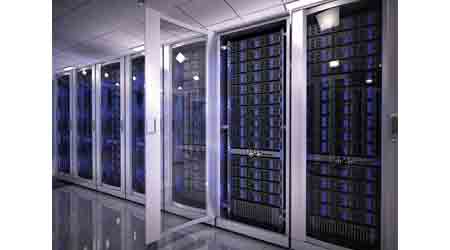Understanding Benefits of Cloud for Data Centers Important for Facility Managers
Part 2 of a 3-part article on cloud, colocation bringing new data center roles for facility managers
It would be shortsighted not to acknowledge that moving certain data processing functions out of an enterprise data center and into colocated or cloud centers might diminish a facility manager’s data center workload. But a clear-eyed understanding of what CIOs need from data processing can mean that facility managers play an integral part in the decision-making team, while helping save money for their organizations. It also involves an understanding of the potential benefits of the cloud.
A one-size-fits-all model doesn’t work. What that means for many organizations is that they’re choosing a hybridized model; in other words, many companies choose to retain enterprise data centers for core processing requirements or security reasons. Nevertheless, for strategic reasons, many executive teams selectively move some data processing into cloud or colocation centers.
The cloud is an increasingly secure alternative, and a common choice for organizations that require scalability, flexibility, and a lower-cost, short-term option. To understand why executive teams might consider the cloud, consider the benefits cited by Christopher Wade, program director, critical environment facility operations for Newmark Grubb Knight Frank.
Cost Savings. There are many reasons why the cloud is cheaper: The large cloud providers are able to benefit from huge economies of scale and thus offer more computing power at a lower cost — in most cases. Cloud computing also gives companies the ability to pay for what’s being used and not pay for unused services.
Integration. “There’s been a move away from siloed applications in the past few years as companies look to build on a more integrated approach,” says Wade.
Investment. One huge benefit of moving to the cloud is that the cost of cloud computing is an operating expense, not a capital expenditure.
“At a time when funding for capital projects is not always available, this can be a crucial reason for not investing heavily in IT equipment,” Wade says. “Such a move will make it easier to control expenditures, as companies will be able to plan much more accurately.”
Moreover, in today’s business climate, facility managers simply do not have the capital budget to adequately cover the expansion of an existing data center or the construction of a new one.
Cassiliano estimates that the capital expenditure outlay for a five megawatt T3 or T4 data center costs $15,000 to $20,000 per kW. That equates to a $75--$100 million expense — hence the move to significantly cheaper cloud computing for some applications or for auxiliary processing.
Key Processing Applications Staying In-House So Far
In the near term, and perhaps permanently, certain applications and certain business models will remain in-house, experts say.
“Financials will always keep core processing,” says Paul Schlattman, senior vice president at ESD Consulting, who notes that they need the security afforded by in-house controls.
Similarly, critical applications and applications that provide competitive advantages will remain in-house for purposes of control, security, and business benefits, says Robert Cassiliano, CEO at Business Information Services and chairman of 7x24 Exchange.
“Examples of this would be trading applications for securities firms, demand-deposit applications for banks, and government or military/defense systems,” Cassiliano says.
Other organizations, such as hospitals, will likely keep billing in-house, as well as any data processing affected by HIPAA regulations.
Experts agree that the security of colocation and cloud services is constantly increasing; as a result, some experts believe that many organizations may shed in-house processing in the years to come.
“I believe that in 10 or 15 years, most enterprise data centers will be in colocation sites or (hosted by) technology companies such as Amazon, Google, HP, IBM, and Microsoft,” says Cassiliano.
— Loren Snyder
Related Topics:














